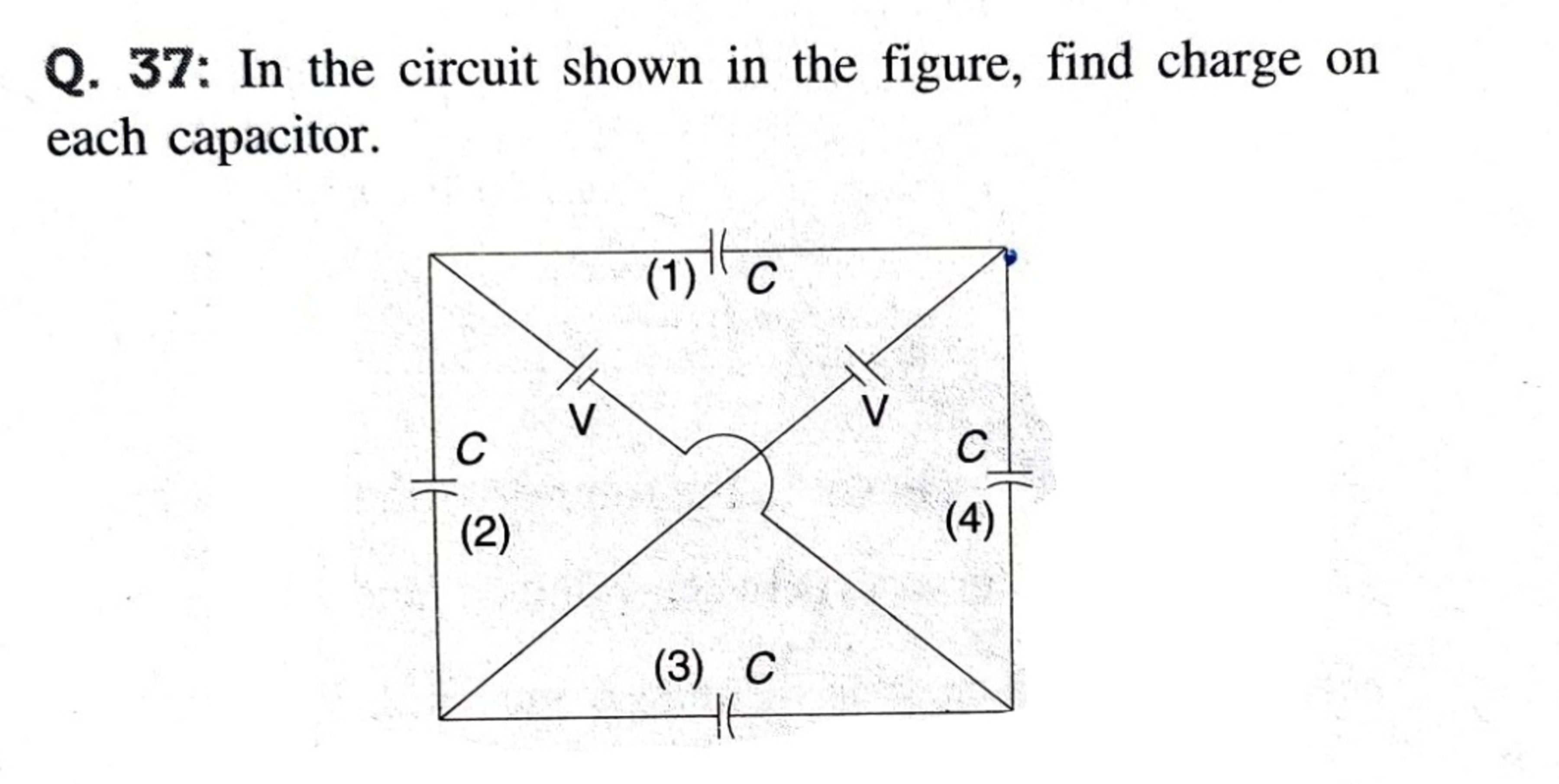Voltages in Capacitor Network
Here is an interesting problem recently shared by Neeraj.

As far as I can tell, there are infinitely many solutions, because when you write a system of four linear equations, the system matrix always ends up being singular. Let be the capacitor voltages. To get a solution, declare the value of and solve a system of three linear equations to get the other three voltages. The system of three linear equations is non-singular.
The following equations describe the system (being mindful of the capacitor polarities):
Since we are declaring the value of , move it over to the other side:
Recall that is the battery voltage. For , . For , . These are just two solutions out of infinitely many possibilities.
One other thing to note. The following relation also holds:
So if is chosen as a positive value, will be negative. If one wishes to impose an additional constraint that none of the capacitor voltages can be negative, it follows that and are both zero.
Easy Math Editor
This discussion board is a place to discuss our Daily Challenges and the math and science related to those challenges. Explanations are more than just a solution — they should explain the steps and thinking strategies that you used to obtain the solution. Comments should further the discussion of math and science.
When posting on Brilliant:
*italics*or_italics_**bold**or__bold__paragraph 1
paragraph 2
[example link](https://brilliant.org)> This is a quote# I indented these lines # 4 spaces, and now they show # up as a code block. print "hello world"\(...\)or\[...\]to ensure proper formatting.2 \times 32^{34}a_{i-1}\frac{2}{3}\sqrt{2}\sum_{i=1}^3\sin \theta\boxed{123}Comments
@Lil Doug
Notice how the V1=0 case corresponds to the expected solution.
@Lil Doug
The final comment that I just added seems relevant also. Perhaps the question assumes that all capacitor voltages must be positive, in which case their solution is indeed the only allowable one.
@Steven Chase how do you know the polarities of capacitor?
Log in to reply
The curved side is negative, and the flat side is positive
@Steven Chase now I am little bit more confused in this probelm.
Why we are doing V1=0
Log in to reply
If all capacitor voltages must be positive (or at least not negative), V1 has to be zero. See the last part of the note. Otherwise, it is just an arbitrary choice, given that the general four by four system is singular.